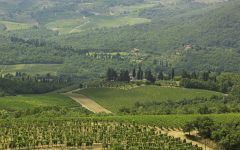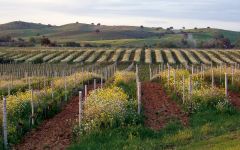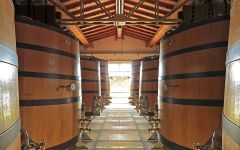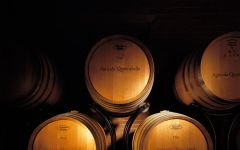Querciabella Chianti Classico 2017
-
James
Suckling



Product Details
Your Rating
Somm Note
Winemaker Notes
Querciabella, in Italian, means “beautiful oak” and our vineyards in Ruffoli and Radda are surrounded by them. A beautiful balancing act of crisp, inviting acidity, pure varietal fruit flavor and character deriving from sourcing the grapes from top sites in three of the the denomination’s best sub-zones. A wine and food lovers’ delight.
Querciabella is a perfect food wine, pairing naturally with all sorts of Mediterranean cuisine and beyond. It is best enjoyed alongside flavors of tomato and olive oil and doesn’t fear coming close to herbs and spices.
Professional Ratings
-
James Suckling
This is a little jammy with lots of ripe fruit and both blueberry and chocolate character. Rich and flavorful, but still fresh and energetic. Shows the warmth of the vintage. From biodynamically grown grapes. Drink or hold.
Other Vintages
2020-
James
Suckling -
Jeb
Dunnuck - Decanter
-
James
Suckling -
Wine &
Spirits
- Vinous
-
Wine &
Spirits -
Wine
Spectator
- Decanter
-
James
Suckling -
Wine
Spectator -
Wine &
Spirits
- Decanter
-
Wine
Spectator -
James
Suckling -
Wine &
Spirits
-
James
Suckling
-
James
Suckling -
Wine
Spectator
-
Wine
Enthusiast
-
Wine
Enthusiast -
Wine
Spectator
- Decanter
-
James
Suckling -
Wine
Enthusiast -
Wine
Spectator
-
James
Suckling
-
Robert
Parker
-
Robert
Parker
-
Wine
Spectator -
Robert
Parker
-
Robert
Parker
-
Wine
Spectator







Founded in 1974, Querciabella enjoys the acclaim of the world’s most discriminating critics and consumers for wines such as Camartina, Batàr, Palafreno and Querciabella Chianti Classico. In its uncompromising pursuit of quality, sustainability and authenticity, Querciabella has continually honed its approach to biodynamic viticulture for over a decade. With vineyards located throughout Tuscany’s Chianti Classico and Maremma areas, Querciabella exemplifies the mindful preservation of tradition through forward-thinking, albeit completely natural, winemaking.
With 183 acres of prime Chianti Classico vineyards – located in the municipalities of Greve, Panzano, Radda and Gaiole – in addition to 79 acres in Maremma on Tuscany’s unspoiled Etruscan coast, Querciabella’s holdings represent the largest extensions of biodynamically farmed (certified organic) vineyards in Italy, contributing extraordinary biodiversity to local and surrounding ecosystems and serving as a sanctuary for thriving numbers of honeybee colonies.

Among Italy's elite red grape varieties, Sangiovese has the perfect intersection of bright red fruit and savory earthiness and is responsible for the best red wines of Tuscany. While it is best known as the chief component of Chianti, it is also the main grape in Vino Nobile di Montepulciano and reaches the height of its power and intensity in the complex, long-lived Brunello di Montalcino. Somm Secret—Sangiovese doubles under the alias, Nielluccio, on the French island of Corsica where it produces distinctly floral and refreshing reds and rosés.

One of the first wine regions anywhere to be officially recognized and delimited, Chianti Classico is today what was originally defined simply as Chianti. Already identified by the early 18th century as a superior zone, the official name of Chianti was proclaimed upon the area surrounding the townships of Castellina, Radda and Gaiole, just north of Siena, by Cosimo III, Grand Duke of Tuscany in an official decree in 1716.
However, by the 1930s the Italian government had appended this historic zone with additonal land in order to capitalize on the Chianti name. It wasn’t until 1996 that Chianti Classico became autonomous once again when the government granted a separate DOCG (Denominazione di Origine Controllata e Garantita) to its borders. Ever since, Chianti Classico considers itself no longer a subzone of Chianti.
Many Classicos are today made of 100% Sangiovese but can include up to 20% of other approved varieties grown within the Classico borders. The best Classicos will have a bright acidity, supple tannins and be full-bodied with plenty of ripe fruit (plums, black cherry, blackberry). Also common among the best Classicos are expressive notes of cedar, dried herbs, fennel, balsamic or tobacco.
